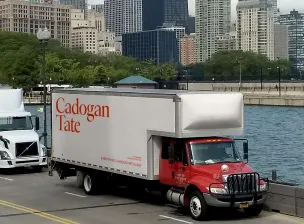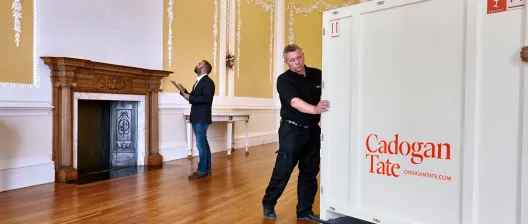Expat’s Guide to International Schools in Miami

Blue skies and tropical weather attract many British expats to Miami every year. Expat families can enjoy the outdoor lifestyle, warm sun and vibrant community Miami has to offer. In this article we explore the schooling options available to expats living in Miami.
Over half of the population in Miami are expats, with around 400,000 Brits living in Florida. Miami is known for being largely multicultural, with a third of the population being Cuban, along with many Latino and South Americans.
Miami acts as an economic gateway to Latin America and has established itself as an international business hub, with numerous corporations opening headquarters here. If you’re moving to Miami for work with the family read our guide below to help you understand the education system and choose a school in Miami for your children.
Education System in Miami
If you’re moving your children to Miami, you have 3 options in terms of schooling. Public, private or international schools.
Every state in the US oversees its own education laws and initiatives for public schools. This means that states across the USA don’t follow a national curriculum and the education system can vary hugely between states. The government has tried to standardise this through Common Core testing, but the US education systems remain quite different across states and differences to the UK education system are wider still.
Public schools
The public school system begins with elementary school the equivalent to primary school in the UK. Elementary school takes children from Kindergarten age 5 through to age 11 (Grade 5). Senior school is split into middle school taking children from age 11 to 14 (Grades 6-8) and high school taking teenagers from age 14 to 18 (Grade 9-12).
Public schools in the US will teach several required courses, including core subjects such as English, maths, science, plus a foreign language, however unlike the UK there is less focus on examinations with no A-level equivalent exam and the curriculums vary a great deal.
The US curriculum has a broader more generalist approach right through to the final years of school, with students expected to study a range of different subjects. This generalist approach is quite different to the system in the UK where students increasing specialise, when choosing GCSE’s and then A-Level subjects, leading students towards a much narrower specialisation in subjects when they reach years 12 – 13.
Private Schools in Miami
Many expat children attend private schools in Miami. There are 432 private schools in the area and tuition varies between $10,636 for elementary and $12,742 for high-school fees. Private schools are favoured for their excellent facilities, low student-teacher ratios, rich arts programs and sports opportunities.
These schools are free to determine their own curriculum, so again they will differ from the UK and from schools in the USA. If you want to go down this route and maintain consistency with European education systems it’s best to look for a private school that offers the International Baccalaureate programme.
International Schools in Miami
International schools, or schools offering International Baccalaureate (IB) are a great option for expats who are unsure on their length of stay. They are known for their high levels of teaching, and offer a range of learning programs, with a global emphasis on their curriculum. The major draw for expats to attend an international school is that they teach internationally recognised and transferable courses your children can take with them anywhere.
The IB courses offer Kindergarten to Grade 12 learning programmes focused on global education to develop academic, personal, emotional and social skills. This includes the following:
- Primary Years Programme (3-12 years) – focuses on developing children and preparing them with essential skills to become active, caring, lifelong learners.
- Middle Years Programme (11-16 years) – prepares students to take the Diploma Programme which is a well-known diploma recognised for the depth of knowledge it offers, tough assessments, college credit and university recognition.
- Diploma Programme (16-19 years) – this is a pre-university programme recognised internationally, offering advanced learning in Grade 9 & 10 and high-level courses in IB for Grades 11 & 12. It is designed to encourage students to become critical thinkers and will lead to recognition in universities around the world.
- Career Related Programme (16-19 years) – This incorporates all values of the IB course whilst focussing on career related education specific to the needs of the child. Students will have to complete a minimum of 2 DP courses and a career related course. Completing the course will lead to higher education, apprenticeships or employment.
IB programmes are offered at both private and selected public schools in Miami. There are currently 14 private schools offering IB programmes in Miami including:
- Windemere Prep School
- Gulliver Academy – Marian C. Krutulis Campus
- The Biltmore School
- Corbett Preparatory School of IDS
- Saint Andrew’s School
- (Click here for the full list)
Some public schools also offer the International Baccalaureate (IB), here’s a list below –
| Primary Years Programme (PYP) | |
|---|---|
| Ada Merritt K-8* | |
| Middle Years Programme (MYP) | Ada Merritt K-8* |
| Biscayne Elementary | |
| Middle Years Programme (MYP) | Fienberg-Fisher K-8 |
| Earlington Heights Elementary* | |
| Middle Years Programme (MYP) | Franck C.Martin K-8* |
| Fienberg-Fisher K-8 | |
| Middle Years Programme (MYP) | Herbert A. Ammons Middle* |
| Franck C.Martin K-8* | |
| Middle Years Programme (MYP) | Homestead Middle* |
| North Beach Elementary | |
| Middle Years Programme (MYP) | Lamar Lousie Curry Middle* |
| South Pointe Elementary | |
| Middle Years Programme (MYP) | Nautilus Middle |
| Treasure Island Elementary | |
| Middle Years Programme (MYP) | North Dade Middle* |
| Middle Years Programme (MYP) | North Miami Middle* |
| *Denotes Magnet Programs | |
| Middle Years Programme (MYP) | Ponce de Leon Middle* |
| Primary Years Programme (PYP) | Middle Years Programme (MYP) |
| Ada Merritt K-8* | Ada Merritt K-8* |
| Biscayne Elementary | Fienberg-Fisher K-8 |
| Earlington Heights Elementary* | Franck C.Martin K-8* |
| Fienberg-Fisher K-8 | Herbert A. Ammons Middle* |
| Franck C.Martin K-8* | Homestead Middle* |
| North Beach Elementary | Lamar Lousie Curry Middle* |
| South Pointe Elementary | Nautilus Middle |
| Treasure Island Elementary | North Dade Middle* |
| North Miami Middle* | |
| *Denotes Magnet Programs | Ponce de Leon Middle* |
(source: advancedacademicprograms.com)
How to choose the right international school
- Research the course offerings and curriculumsIf you’d like to move back to the UK after a couple of years, ensure the school teaches the adequate courses which can be transferred back to the UK if required. Do your research into the programmes they teach, staff, along with their expertise to make sure you’re satisfied they meet your needs. If your child has an area of study or extracurricular activity they want to pursue, find an international school that specialises in this and can support them to reach their potential in this area.
- Review the schools’ accreditationsTo ensure the best education for your children assessing the accreditations of the school is important. This will give insight into the quality of staff, academic programs and curriculum. Initially you can check with the Council of International Schools or contact the schools directly to ask for them.
- Review admission requirementsWhen selecting a school review their admission requirements on their website before applying; you can typically download application documents from their website to review. You will need to provide information on your child’s academic skills, extra-curricular activities and language ability. There may also be deadlines for applications and waiting lists so it’s best to get a head start with the process. Some schools may also require entrance exams and interviews.
- CostsMost private international schools in Miami will incur fees, you will typically have to pay annual fees to cover tuition and school fees, some offer boarding facilities which you’ll need to factor into your costs. Fees can range anywhere between $20,000 – $50,000. Tuition payments can usually be paid in instalments across the year, however there will be additional school fees plus a deposit to pay upfront to secure their place.
- Visit the schoolThere’s no better way to help confirm your decision other than meeting the teachers and visiting the school. You can discuss any concerns, programme offerings or course content thoroughly with teachers. It also allows both you and your children to familiarise yourselves with the school to ensure you’re both completely happy with your choice.
Moving to another country with the family can be stressful. But, the beautiful skies and beaches of Miami are worth the effort. If you need help making the move get in touch with our relocation specialists who can help make your move seamless.



